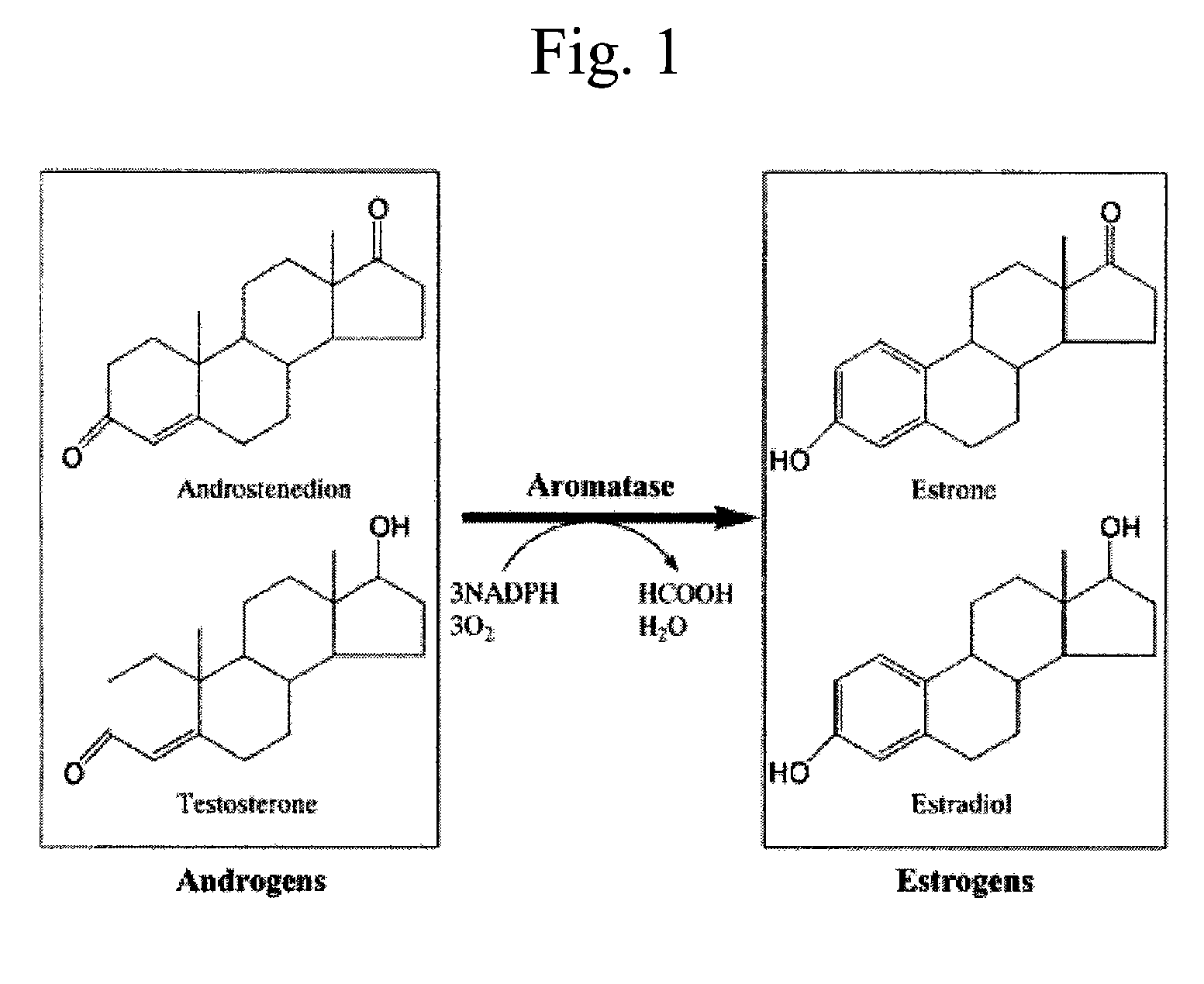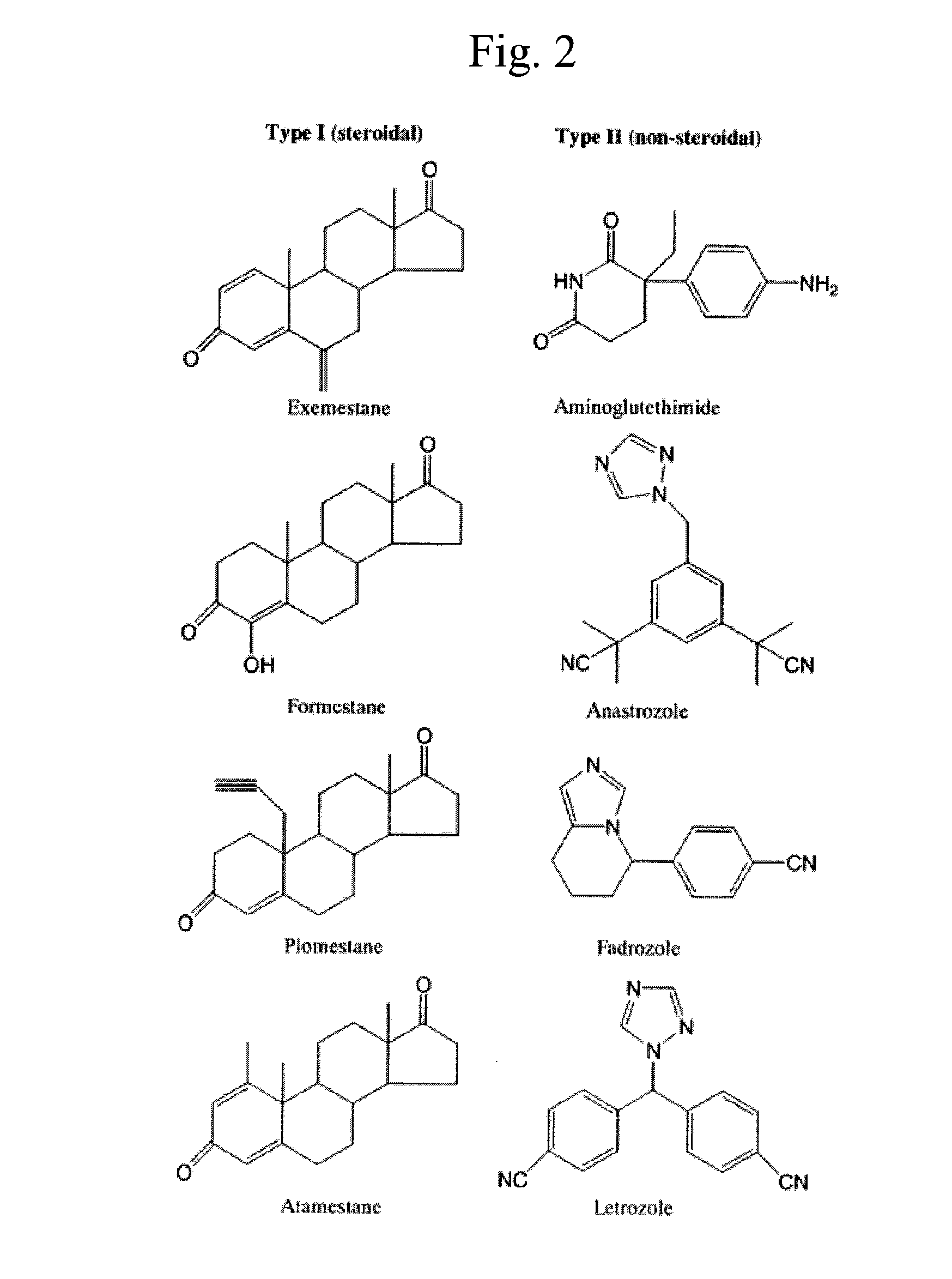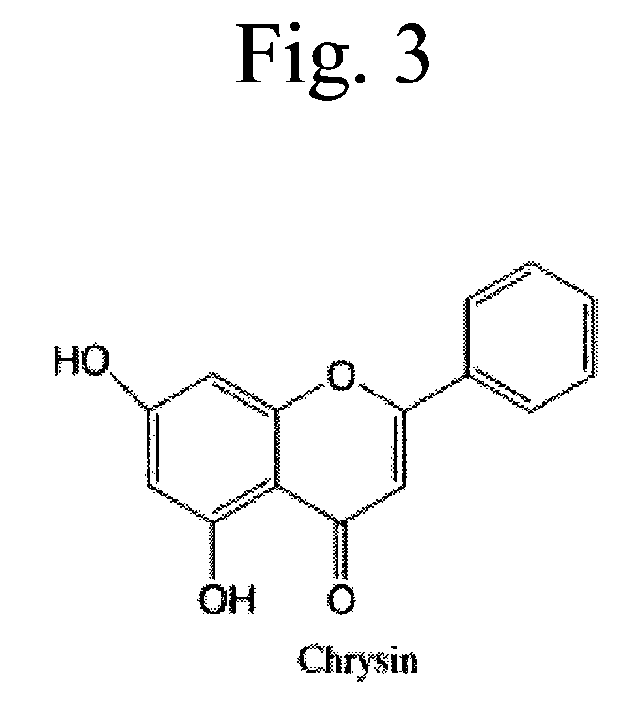Aromatase inhibitor
a technology of aromatase and inhibitor, which is applied in the direction of biocide, drug composition, metabolic disorders, etc., can solve the problems of male menopausal disorders, achieve the effect of inhibiting aromatase activity, reducing male hormones, and effective treatment and/or prevention
- Summary
- Abstract
- Description
- Claims
- Application Information
AI Technical Summary
Benefits of technology
Problems solved by technology
Method used
Image
Examples
example 1
Extraction Method of Crude Drugs (1)
[0032]To each 100 g of dried product of prunella spike (fruit spike), sweet hydrangea leaf (leaf), a jasmine tea (leaf, flower), “Bokusoku” (a bark of Quercus acutissima or a closely related plant thereof) (bark), “Tencha” (sweet tea) (leaf), “Karensou” (Eclipta prostrata) (whole plant), “Youbaihi” (a bark of Myrica rubra Sie b. et Zucc.) (bark), French maritime pine (bark), betal palm (seed), “Rouro” (a root of Rhaponticum unifloru m DC. or Echinops latifolius Tausch) (root), “Ryoukyou” (a rhizome of Alpinia officinarum Hance) (rhizome), rooibos tea (leaf), rhubarb (root), pu-erh tea (leaf), green tea (leaf), “Ougon” (a root of Scutellaria baicalensis Georgi) (rhizome), licorice (root), “Senrikou” (Senecio scandens Buch.-Ham.) (whole plant), wintergreen (leaf), “Kashi” (a matured fruit of Terminalia chebula Retz.) (fruit), “Yagotou” (a bark of Mallotus japonicus) (rind), polygnum root (tuber), barrenwort (Epimedium Herb) (leaf), “Ouhi” (a bark of...
example 2
Extraction Method of Crude Drugs (2)
[0033]To 100 g of a dried material of Asparagus (rhizome, root) was added 300 L of 30% ethanol / purified water, to 100 g of a dried material of guarana (seed) was added 300 L of 35% ethanol / purified water, to 100 g of a dried material of “Kokeiten” (golden root) (underground portion) was added 300 L of 50% ethanol / purified water, to each 100 g of St. John's wort (Hypericum perforatum L.) (herb (upper ground portion)) dried material and amla fruit (fruit) dried material was each added 300 L of 60% ethanol / purified water, and to 100 g of a dried material of milk thistle (fruit peel) was added 300 L of 80% ethanol / purified water, extraction was each carried out at 80° C. for 1 hour twice under reflux, and a filtered extract was lyophilized (freeze-dried) according to the conventional method. As a result, each 16.4 g, 17.9 g, 30.3 g, 27.5 g, 26.3 g and 3.5 g was obtained as a dried solid content.
example 3
Compound to be Tested
[0034]With regard to icariin which is a conventionally known component contained in barrenwort (Epimedium Herb), and silybin and silymarin which are conventionally known components contained in milk thistle, commercially available standard products were used.
[0035]That is, icariin (LKT, Laboratories, Inc, USA, Lot No. 2591307), silybin (Extrasynthese, France, Lot No. 02112642) and silymarin (LKT, Laboratories, Inc, USA, Lot No. 2397805) were used.
PUM
 Login to View More
Login to View More Abstract
Description
Claims
Application Information
 Login to View More
Login to View More - R&D
- Intellectual Property
- Life Sciences
- Materials
- Tech Scout
- Unparalleled Data Quality
- Higher Quality Content
- 60% Fewer Hallucinations
Browse by: Latest US Patents, China's latest patents, Technical Efficacy Thesaurus, Application Domain, Technology Topic, Popular Technical Reports.
© 2025 PatSnap. All rights reserved.Legal|Privacy policy|Modern Slavery Act Transparency Statement|Sitemap|About US| Contact US: help@patsnap.com



